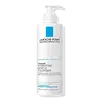Burt's Bees Night Cream for Sensitive Skin Versus La Roche-Posay Toleriane Hydrating Gentle Cleanser
What's inside
What's inside
 Key Ingredients
Key Ingredients

 Benefits
Benefits

 Concerns
Concerns

 Ingredients Side-by-side
Ingredients Side-by-side

Water
Skin ConditioningHelianthus Annuus Seed Oil
EmollientGlycerin
HumectantCetyl Alcohol
EmollientCI 77947
Zea Mays Starch
AbsorbentGossypium Herbaceum Flower Extract
HumectantOryza Sativa Extract
AbsorbentKaolin
AbrasiveAloe Barbadensis Leaf Juice
Skin ConditioningSucrose
HumectantButyrospermum Parkii Butter
Skin ConditioningArtemisia Umbelliformis Extract
Skin ConditioningJojoba Esters
EmollientBeta Vulgaris Root Extract
Skin ConditioningLecithin
EmollientSaccharum Officinarum Extract
MoisturisingHydrolyzed Jojoba Esters
Skin ConditioningFructose
HumectantEuphrasia Officinalis Extract
AntimicrobialCitric Acid
BufferingXanthan Gum
EmulsifyingGlucose
HumectantPotassium Sorbate
PreservativeAlcohol Denat.
AntimicrobialSucrose Polystearate
EmollientInositol
HumectantTrehalose
HumectantSucrose Stearate
EmollientBenzoic Acid
MaskingPhenoxyethanol
PreservativeSodium Stearoyl Lactylate
EmulsifyingGlyceryl Laurate
EmollientSodium Benzoate
MaskingSodium PCA
HumectantWater, Helianthus Annuus Seed Oil, Glycerin, Cetyl Alcohol, CI 77947, Zea Mays Starch, Gossypium Herbaceum Flower Extract, Oryza Sativa Extract, Kaolin, Aloe Barbadensis Leaf Juice, Sucrose, Butyrospermum Parkii Butter, Artemisia Umbelliformis Extract, Jojoba Esters, Beta Vulgaris Root Extract, Lecithin, Saccharum Officinarum Extract, Hydrolyzed Jojoba Esters, Fructose, Euphrasia Officinalis Extract, Citric Acid, Xanthan Gum, Glucose, Potassium Sorbate, Alcohol Denat., Sucrose Polystearate, Inositol, Trehalose, Sucrose Stearate, Benzoic Acid, Phenoxyethanol, Sodium Stearoyl Lactylate, Glyceryl Laurate, Sodium Benzoate, Sodium PCA
 Reviews
Reviews

Ingredients Explained
These ingredients are found in both products.
Ingredients higher up in an ingredient list are typically present in a larger amount.
Glycerin is already naturally found in your skin. It helps moisturize and protect your skin.
A study from 2016 found glycerin to be more effective as a humectant than AHAs and hyaluronic acid.
As a humectant, it helps the skin stay hydrated by pulling moisture to your skin. The low molecular weight of glycerin allows it to pull moisture into the deeper layers of your skin.
Hydrated skin improves your skin barrier; Your skin barrier helps protect against irritants and bacteria.
Glycerin has also been found to have antimicrobial and antiviral properties. Due to these properties, glycerin is often used in wound and burn treatments.
In cosmetics, glycerin is usually derived from plants such as soybean or palm. However, it can also be sourced from animals, such as tallow or animal fat.
This ingredient is organic, colorless, odorless, and non-toxic.
Glycerin is the name for this ingredient in American English. British English uses Glycerol/Glycerine.
Learn more about GlycerinWater. It's the most common cosmetic ingredient of all. You'll usually see it at the top of ingredient lists, meaning that it makes up the largest part of the product.
So why is it so popular? Water most often acts as a solvent - this means that it helps dissolve other ingredients into the formulation.
You'll also recognize water as that liquid we all need to stay alive. If you see this, drink a glass of water. Stay hydrated!
Learn more about Water